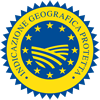Description
The Cabrito de Barroso PGI is derived from crosses between the Bravia bread of goat and the Serrana and they are slaughtered by the third month of life.
Production Area
Cabrito de Barroso PGI is produced in the municipal areas of Boticas, Chaves, Montalegre and Vila Pouca de Aguiar, in the Vila Real district.
Production Method
The Bravia and Serrana breed of goats feed mostly on the natural vegetation of the area. They are rarely kept indoors and usually spend most of their lives in the open air. These goats are the principal source of milk for the local population of these marginal areas of poor soil and the commerce of Cabrito is the mainstay of the economy for many local families.
Appearance and Flavour
Cabrito de Barroso PGI has a reddish colour with a characteristic and pleasant flavour. The meat is very succulent thanks to the ecological conditions in this area and the care and attention given to the rearing of the goat by the local people.
History
The Terras do Barroso has a long tradition of goat rearing. A deeply rooted cooperative system of production is well established together with the commitment of the local population to goat rearing. The history of Cabrito de Barroso PGI is closely linked to this ancient tradition. The locals, from ancient times, made use of the local natural vegetation of the mountains to raise the kid goats. Some experts talk of the existence in the past of a Barrosã breed of goat, which became extinct because of the continuous influx of migratory waves of other breeds and also because of changes in the environment and it became replaced by the Bravia and Serrana breeds from the High Lands of Minho, which moved to the north with its abundant natural vegetation.
Gastronomy
Cabrito de Barroso PGI must be stored at a temperature of 7°C, or between -18°C and -20°C if it is frozen. Once bought the meat can only be kept a few days in the fridge. Cabrito de Barroso PGI is well-known throughout the region, is mostly cooked in wood ovens and is eaten at times of religious festivals. A typical and famous recipe is caldeirada de cabrito which is pot roast over a low flame with tomatoes, garlic, olive oil and the local bread. Croutons, potatoes and peas may also be added.
Marketing
This meat is sold as Cabrito de Barroso PGI. It is sold clearly labelled and identified either whole or in halves, in pieces weighing between 4 kg and 6 kg.
Distinctive Features
Cabrito de Barroso PGI, given the superior quality of the meat is always associated with great and important occasions such as christenings, weddings and religious festivals. Cabrito was once also given as a much appreciated present to the doctor, the priest or the civil or military authorities, because of the high standing of this meat.






